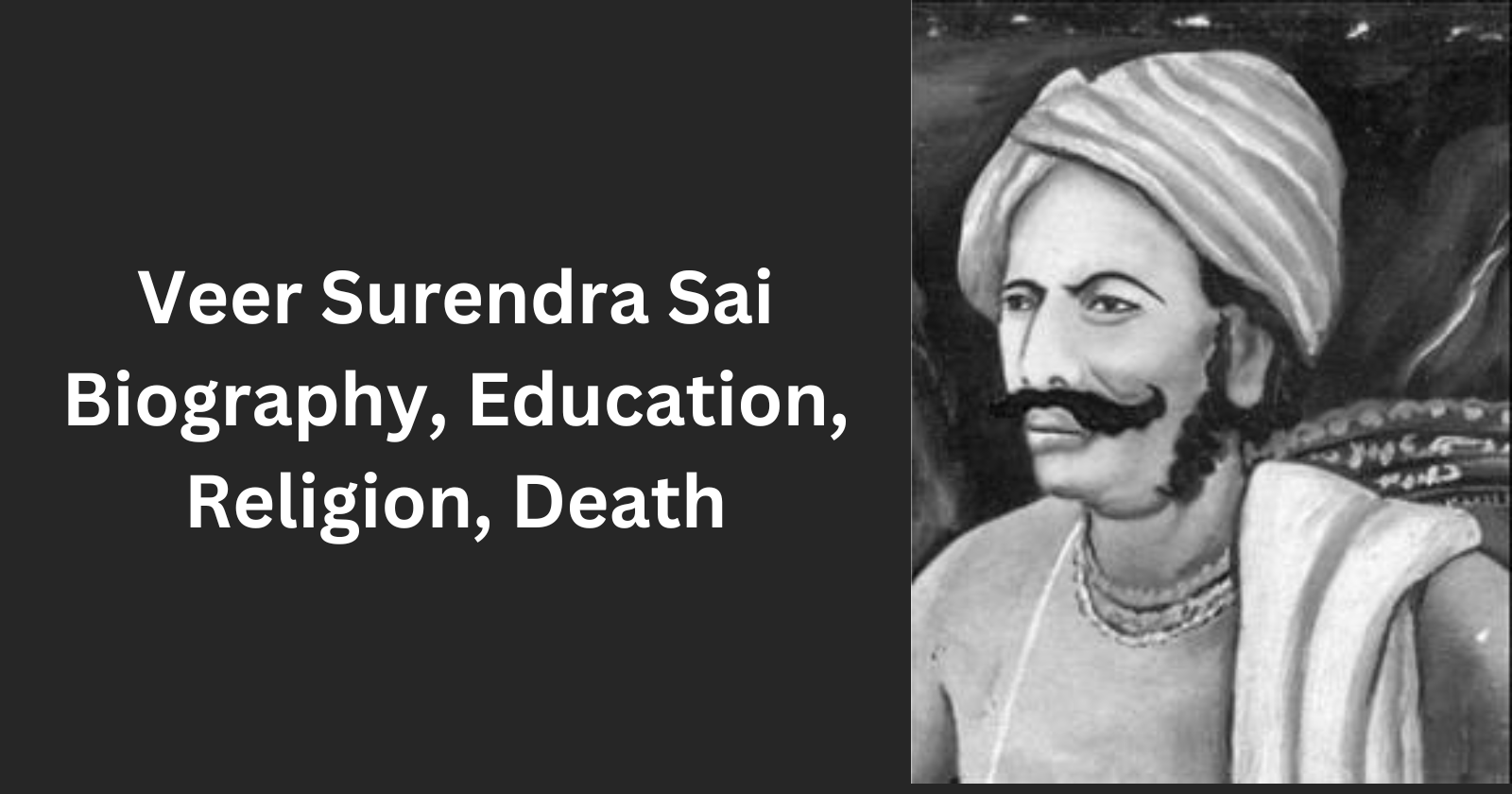Veer Surendra Sai boldly declared his revolt against the British regime in the year 1827, marking the beginning of his resistance against colonial oppression. In this blog, I will share Veer Surendra Sai Biography, Education, Religion, Death and how connected with Sambalpur and the fight against the Britishers.
Veer Surendra Sai Biography
Veer Surendra Sai was born on January 23, 1809, in the village of Khinda, located in the Sambalpur district of present-day Odisha, India. He hailed from the illustrious Chauhan dynasty, which had a long history of ruling the region. Surendra Sai was the second son of Dharma Singh, and from an early age, he was imbued with a sense of duty, justice, and leadership. He always followed secularism, Socialism and against casteism. These qualities would later become instrumental in his fight against British colonial rule.
Education
Veer Surendra Sai’s education was likely a blend of traditional learning and the practical knowledge needed to navigate the realities of British rule. His deep understanding of Sambalpur’s local customs, laws, and socio-political landscape indicates a strong foundation in traditional knowledge.
Religion
Veer Surendra Sai was a devout Hindu, deeply influencing his values and principles. His faith played a significant role in his life, shaping his sense of duty, justice, and righteousness. The Hindu belief system, with its emphasis on dharma (righteous duty) and resistance against adharma (unrighteousness), provided a moral and ethical framework for his fight against British colonial rule.
Fight Against British
Veer Surendra Sai’s fight against British colonial rule was a defining chapter in India’s struggle for independence. Born in 1809 in Sambalpur, Odisha, Sai emerged as a formidable leader against the British annexation of Sambalpur in 1849. Ignored for his rightful claim to the throne, he led a rebellion rooted in guerrilla warfare, leveraging the region’s dense forests and rugged terrain.
Initially captured in 1840, his resistance gained new momentum following his release during the 1857 Indian Rebellion. For seven years, from 1857 to 1864, Sai and his followers conducted relentless surprise attacks on British outposts, severely disrupting their operations.
The tribal communities’ unwavering support was crucial, providing resources and shelter. Despite limited resources and facing a well-equipped colonial army, his strategic acumen and local knowledge enabled a sustained rebellion. In 1864, he was betrayed and captured, spending his remaining years in harsh imprisonment until he died in 1884.
Surendra Sai’s relentless fight against British rule made him a symbol of resistance and resilience, inspiring future generations and cementing his legacy in India’s fight for freedom. His struggle highlighted the significant contributions of regional leaders and tribal communities to the broader independence movement.
How to Connect with Sambalpur
Following the death of Maharaja Sai, the last recognized ruler of Sambalpur, the British ignored the legitimate claims of the local royal family, including Surendra Sai, and imposed their own rule. As the rightful heir to the throne, Surendra Sai’s connection to Sambalpur was not just personal but also political, as he sought to reclaim and protect the sovereignty of his homeland.
Death
Veer Surendra Sai’s relentless fight against British rule culminated in his capture in 1864. Recognizing his significant influence and threat, the British imprisoned him in Asirgarh Fort, located in present-day Madhya Pradesh. The harsh conditions and isolation of his imprisonment took a toll on his health. After nearly two decades in captivity, Surendra Sai passed away on May 28, 1884. Despite dying in imprisonment, his legacy as a symbol of resistance and courage in the struggle for Indian independence endures, particularly in his homeland of Odisha. His life and sacrifices continue to inspire future generations.
Conclusion
To honour Surendra Sai’s legacy, various initiatives have been undertaken. Educational institutions, such as the Veer Surendra Sai University of Technology in Odisha, have been named after him, serving as centres of learning and research dedicated to his memory. These institutions not only commemorate his contributions but also inspire future generations to learn about and draw inspiration from his life.
Cultural commemorations, including statues, memorials, and public events, have also been established to honour Surendra Sai. These efforts aim to keep his memory alive in the collective consciousness of the people, ensuring that his contributions to India’s freedom struggle are not forgotten.
Veer Surendra Sai’s life is a powerful testament to the enduring spirit of resistance and the quest for justice. His unwavering commitment to the cause of freedom, despite the immense challenges and hardships he faced, serves as an inspiration for generations to come. Sai’s story is a reminder of the countless sacrifices made by individuals and communities in the fight against colonial oppression.

